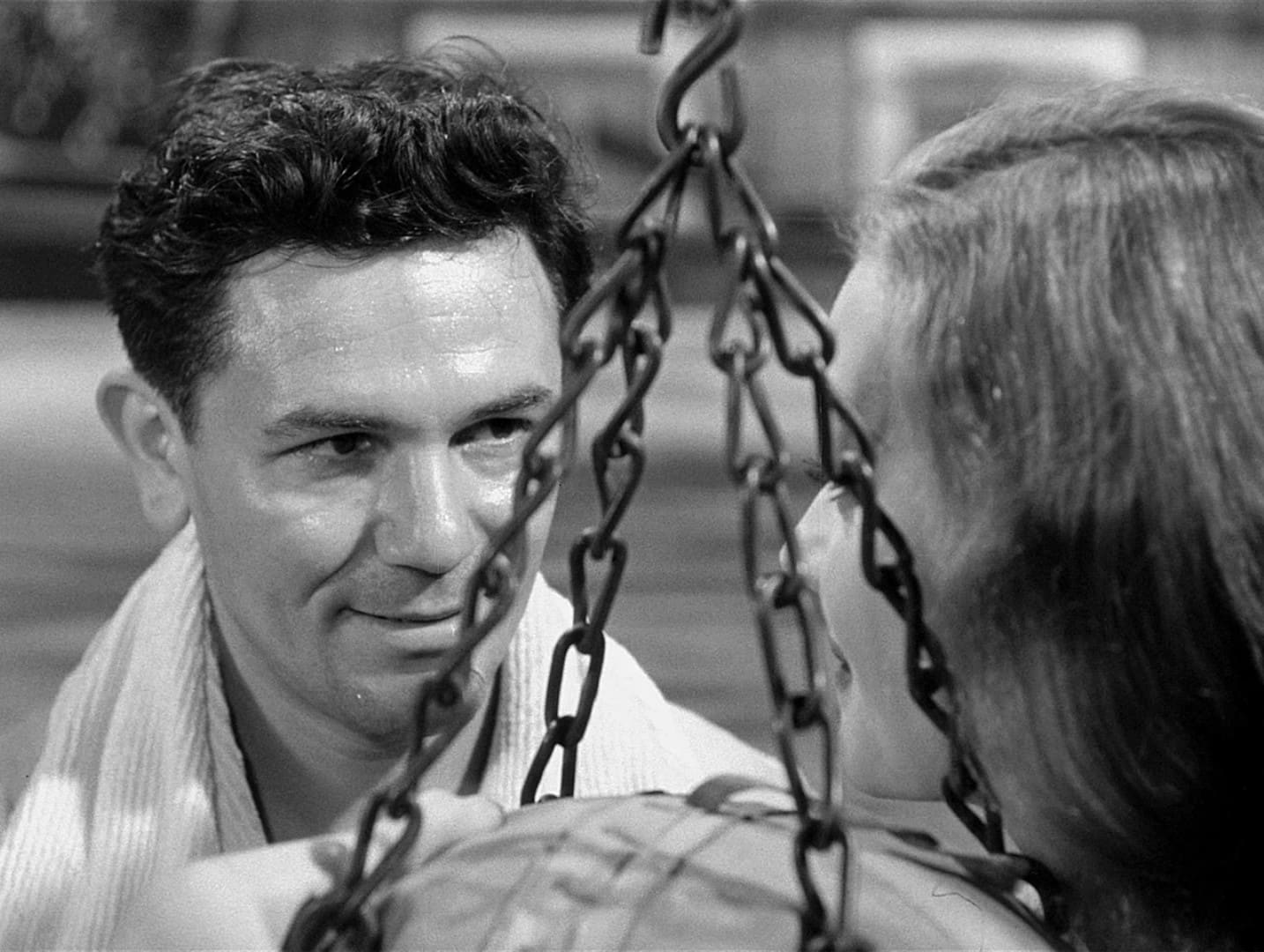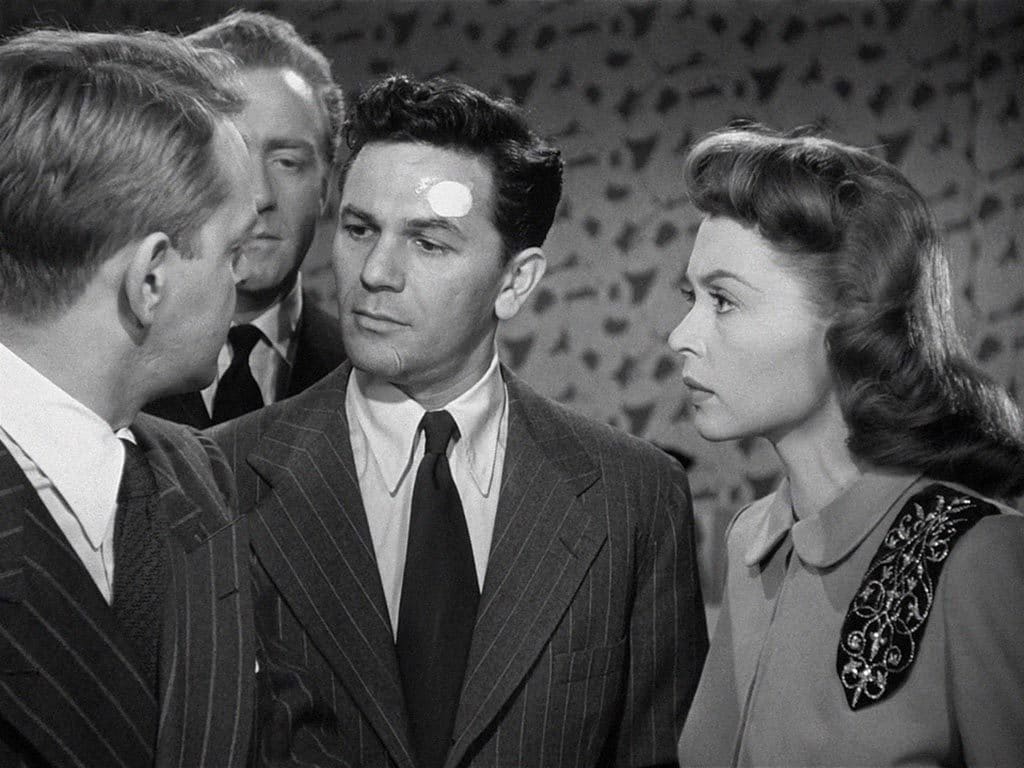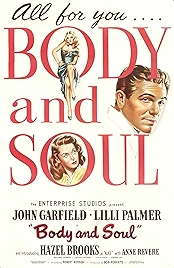A lightly fictionalised account of the life of boxer Barney Ross, 1947’s Body and Soul is often described as the best boxing movie ever made. While that’s highly contestable – there’s not much actual boxing in it, compared to The Set-Up or Raging Bull, for instance – it is undoubtedly one of the best movies set in the world of boxing (not quite the same thing).
The original intention was to tell Ross’s story as a straight biography, but that was dropped when Ross’s heroin habit became common knowledge. And so John Garfield here plays Charley Davis, a boxer reflecting on his life – a spectacular rise from the mean streets and gifted amateurdom to being the world champion – as he’s about to climb into the ring for the fight he’s meant to throw.
In flashback, it’s a story of a man en route to riches and success, leaving behind the mother (Anne Revere) who hates the world of fighting, and the sweet, talented fiancee (Lilli Palmer) who he trades for a hot floozie (Hazel Brooks) with an eye on the main chance (ie Charley).
In the era of McCarthyism, this film was regularly described as socialist but moralistic seems more appropriate. This is the story of people led astray by their love of money, not money itself. What shall it profit a man, as the Bible says, if he gains the whole world but loses his soul…
That said, a good number of the cast and crew working on this film got blacklisted by McCarthy’s House Unamerican Activities Committee. As many if not more went on to become directors in their own right, including Robert Parrish (this film’s editor), Abraham Polonsky (writer) and Robert Aldrich (assistant director).
The cast fit their roles like a fist in a glove. Garfield four-square and with a fighter’s squashed features. Palmer hoity-toity as good-girl Peg. Brooks’s mean-girl smile and wanton leer as Alice. Revere all pious motherly sighs.
There’s also a particularly effective turn by Lloyd Gough as Roberts, the promoter who boosts Charley in one-hand-washes-the-other fashion. When Roberts eventually turns on Charley, we understand that it’s just business, not gangsterism, though that suggestion is also there in his performance.
Canada Lee plays Ben Chaplin, the black fighter who can’t get an even break and ends up under Charley’s wing. He has a double function – as Charley’s conscience made flesh and as a harbinger of what’s to come for the champion when his time is up.
James Wong Howe is one of the greatest cinematographers of the classic Hollywood era – Yankee Doodle Dandy, The Sweet Smell of Success, Hud, Seconds – and the film can be watched simply as a demonstration of a master at work. There’s some overtly noirish stuff – slatted shadows, harsh light, pools of darkness – but the sheer variety of lighting styles that Wong Howe lays on make this a box of visual delights. And the fluidity of the camera – he was on rollers skates for the fight scenes, apparently.
With ten minutes to go, we still haven’t seen that much actual fighting – see opening remarks – but then director Robert Rossen gives us 15 rounds of pitiless slugging compressed into those closing minutes, sensing that an audience’s tolerance for this sort of thing isn’t endless.
It’s emblematic of the entire film. Thanks to Polonsky’s screenplay and Rossen’s no-nonsense direction this is a tight, fast movie cramming a lot of plot detail into its 104 minutes running time.
Above them all stands Garfield, who would be dead within five years. Not yet 40. Body and Soul reminds us how talented he was. “No actor can be good until he’s reached 40,” he once told a journalist. Imagine what might have been.
Body and Soul – Watch it/buy it at Amazon
I am an Amazon affiliate
© Steve Morrissey 2024


